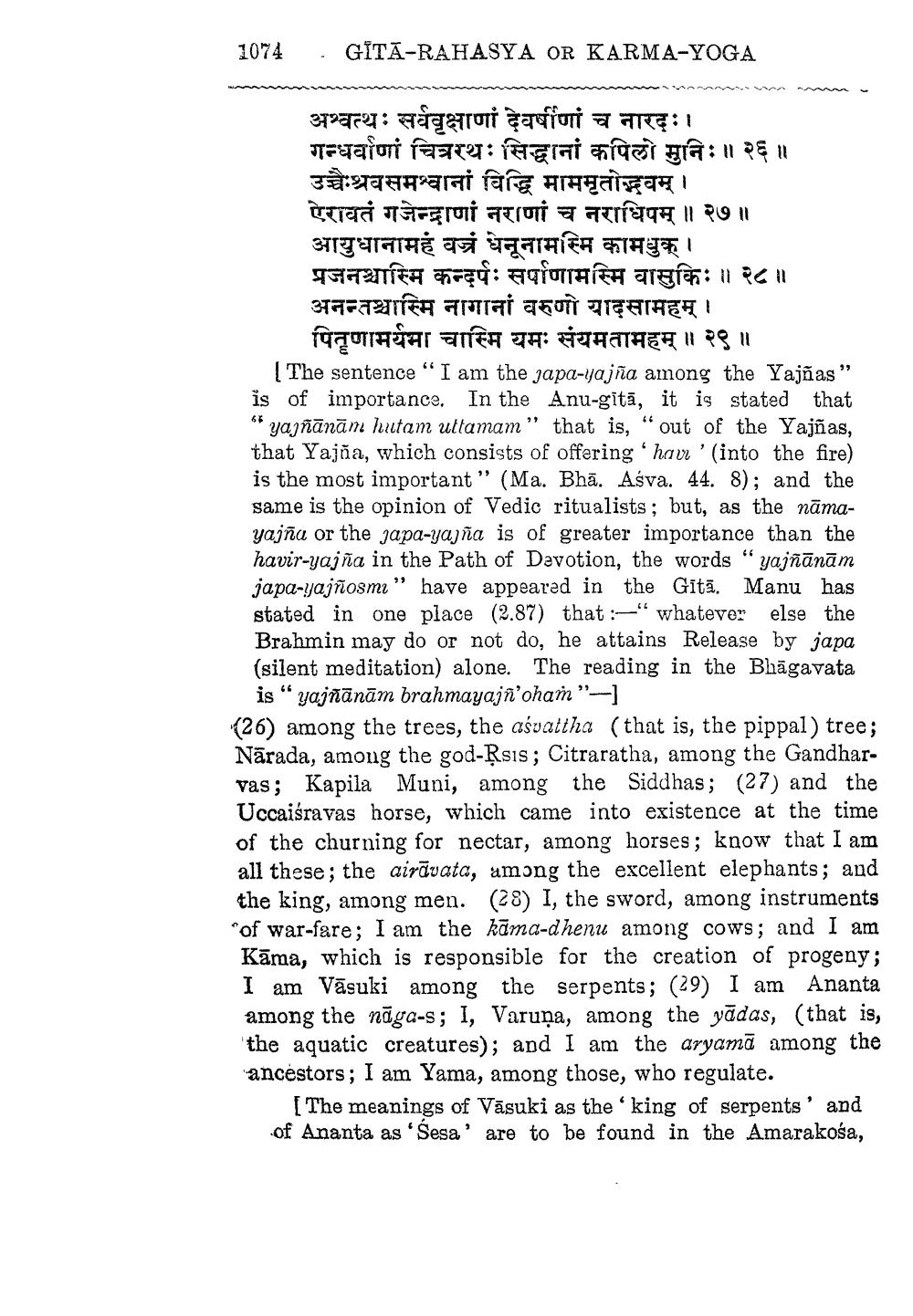________________
1074
GITA-RAHASYA OR KARMA-YOGA
अश्वत्थः सर्ववृक्षाणां देवर्षीणां च नारदः। Traaioni 27: EGGI ya: 11pul उच्चैःश्रवसमश्वानां विद्धि माममृतोद्भवम् । ऐरावतं गजेन्द्राणां नराणां च नराधिपम् ॥ २७॥ आयुधानामहं वज्रं धेनूनामस्मि कामधुक् । TERPENTIER forge: FTOHITH STEÍF: 11 26 11 अनन्तश्चास्मि नागानां वरुणो यादसामहम् ।
पितृणामयेमा चास्मि यमः संयमतामहम् ॥ २९॥ (The sentence “I am the japa-yajña among the Yajñas" is of importance. In the Anu-gitā, it is stated that * yajñānām hutam uttamam” that is, “out of the Yajñas, that Yajna, which consists of offering 'havi' (into the fire) is the most important” (Ma. Bhā. Ašva. 44. 8); and the same is the opinion of Vedic ritualists; but, as the nāmayajña or the japa-yajña is of greater importance than the havir-yajña in the Path of Devotion, the words "yajñānām japa-yajñosmı" have appeared in the Gītā. Manu has stated in one place (2.87) that :-“whatever else the Brahmin may do or not do, he attains Release by japa (silent meditation) alone. The reading in the Bhagavata
is "yajñānām brahmayajñ'oham"(26) among the trees, the aśvattha (that is, the pippal) tree; Nārada, among the god- sis; Citraratha, among the Gandharvas; Kapila Muni, among the Siddhas; (27) and the Uccaiśravas horse, which came into existence at the time of the churning for nectar, among horses; know that I am all these; the airāvata, among the excellent elephants; and the king, among men. (28) I, the sword, among instruments "of war-fare; I am the kama-dhenu among cows; and I am Kāma, which is responsible for the creation of progeny; I am Vāsuki among the serpents; (29) I am Ananta among the nāga-s; I, Varuna, among the yādas, (that is, the aquatic creatures); and I am the aryamā among the ancestors; I am Yama, among those, who regulate.
[The meanings of Vāsuki as the king of serpents' and of Ananta as 'Sesa' are to be found in the Amarakośa,




